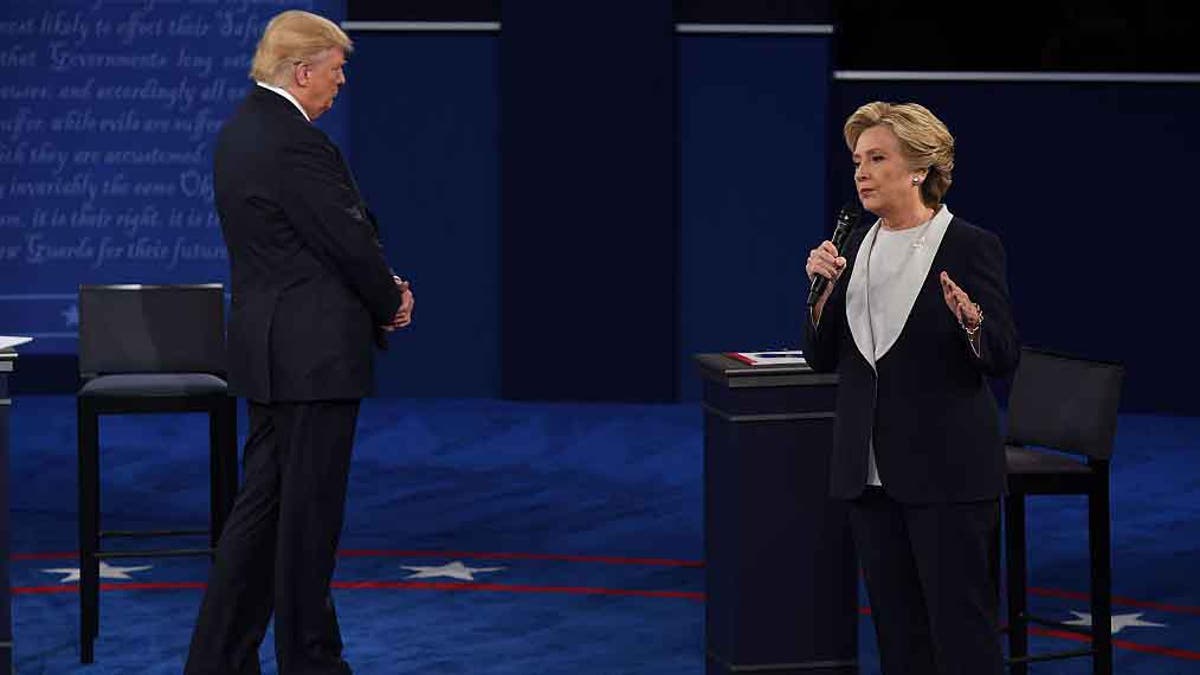
The second presidential debate at Washington University in St. Louis, Missouri, on October 9, 2016.
After an emotional ride, an evening of surprises and possibly the biggest political shakeup this country has seen, the voters have spoken and we now prepare to embrace President Donald J. Trump.
Despite the fear among many and the uncertainty everyone – from immigrant families to global economists – is facing, is is worth asking: What may a President Trump bring to Hispanics? How did he secure support from this fast-growing voter segment?
What was missed through this election, and also underreported and clouded by the immigration noise, was the fact that the top issue for Hispanics is jobs and the economy.
Many Americans mistakenly believed that Trump’s hard line on immigration and polarizing epithets like ‘bad hombres’ would ruin his chances with Hispanic voters. This logic relied on an assumption that immigration and race relations were the most important issues for these voters — yet the data says otherwise.
According to CNN, Clinton only secured 65 percent of the Latino vote while Trump secured 29 percent, higher than Romney’s 27 percent.
Some early reports show a 34 percent Hispanic support in Florida, which is exactly aligned with CuturIntel™'s non polling method of measuring opinion: two days ago, the method showed Trump had 32 percent of Latino support in the Sunshine State.
For months we have reported using CulturIntel’s big data methodology that positive opinion for Trump among Hispanics was not as bad as traditional pollsters reported, validating that the traditional methods may not be sufficient to measure an unconventional election.
Back in June we reported Trump securing 34 percent positive opinion among Hispanics, which was reported by Fox News Latino, Drudge Report and covered by The O’Reilly Factor. It unleashed a wave of tweets in disbelief that I backed with data and an N sample of over 1.9 million. Our data also always reported them almost in a dead tie for positive opinion nationally.
What was missed through this election, and also underreported and clouded by the immigration noise, was the fact that the top issue for Hispanics is jobs and the economy. According to CuturIntel, a proprietary big data methodology that utilizes advanced data extraction, machine learning and artificial intelligence techniques, to mine the digital discussions of people, immigration and race relations were only key issues for 7 and 8 percent of Hispanics.
Over the last 12 months, jobs and the economy dominated 35 percent of Hispanics’ political conversation, which possibly made a winning difference for Trump.
This topic was of even greater concern for Latino small business owners, who had a vested interest in eschewing government regulations, lowering the cost of health care and jump-starting the sluggish economy to protect their businesses and employees.
The number of Latino-owned businesses has grown nearly 50 times faster than non-Latino-owned businesses, yet Latino businesses lag far behind in revenue compared with those owned by non-Latinos, as reported by the Stanford Latino Entrepreneurship Initiative. This represents a $1.4 trillion opportunity for the U.S. economy that could be positively impacted with less regulation and incentives for small business owners.
These concerns were discussed in the National Federation of Independent Business 2016 report as the top issues for all small business owners this year. Given Donald Trump’s four-point plan to cut taxes, reduce regulation, unleash the energy sector with low prices, and eliminate the trade deficit from his first day in the White House, he appealed to many small business owners. Trump’s vows to bring jobs back from overseas and promises to dismantle health care and business regulations allowed him to differentiate him as an attractive choice.
Peter Navarro, one of Trump’s economic policy advisors, claimed that the lag in entrepreneurship and successful small businesses started with government restrictions. Trump articulated that it was most important to focus on growing GDP to 3.5 percent through deregulation.
For small business owners, Trump’s attitude toward the Regulations from the Executives in Need of Scrutiny (REINS) Act was promising as a concrete way to lower the costs of federal regulations, which had risen under President Obama and hopefully streamline the cost to owning a business. Additionally, through his stance, Trump was able to showcase himself as a Washington outsider with a business sense and values in line with traditional Conservative values of small government.
This is particularly attractive to small business owners, as the National Small Business Association reports 2 in 5 of the owners of small businesses as Republicans and 95 percent of them as active voters in national elections.
Another issue pressuring small business owners has been tax reform. The United States corporate tax is currently 35 percent, the highest in the developed world. During his campaign, Trump promised that all businesses – from large Fortune 500 corporations to tiny family businesses and freelancers – would not pay more than 15 percent of their income in taxes. This particular promise renewed hope for small businesses and entrepreneurs, who had been struggling to pay existing high business income tax rates.
Certainly, this election leaves us with many lessons to learn. Polls need to be reconsidered and advanced data extraction techniques and big data should be considered as complimentary technology. Also, Hispanics are not a single-issue community. We are highly entrepreneurial, motivated by a vibrant economy and jobs and ultimately vote for candidates and not for parties.
Now let us unite as one country to heal the wounds of a messy election and work together in support of President Trump.
